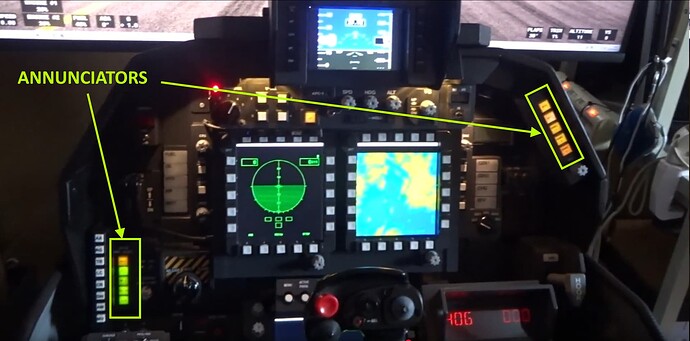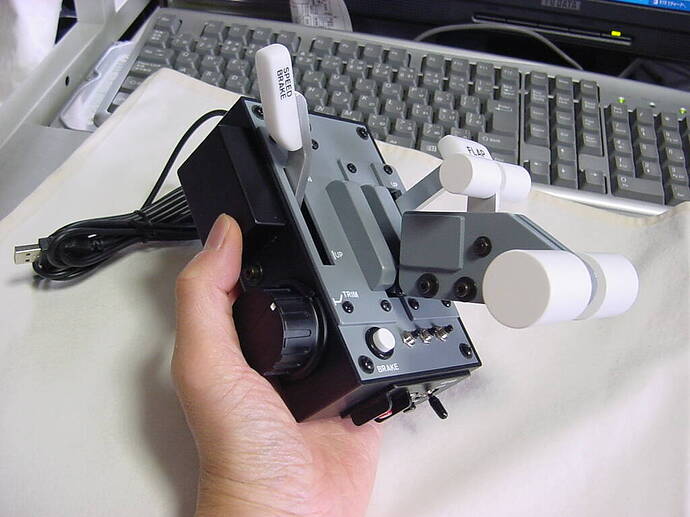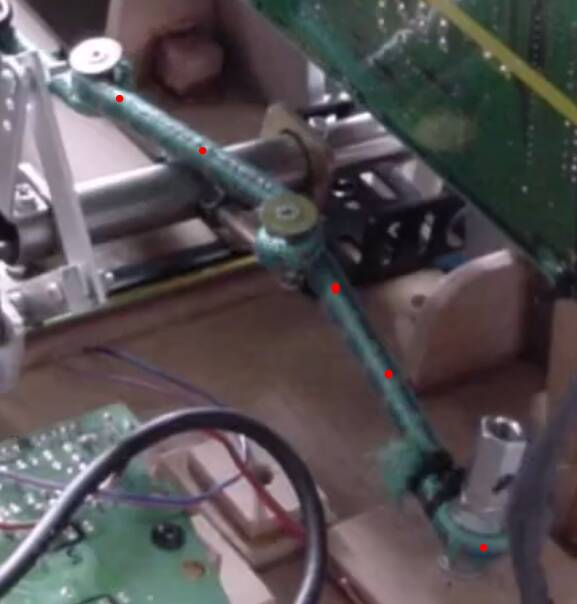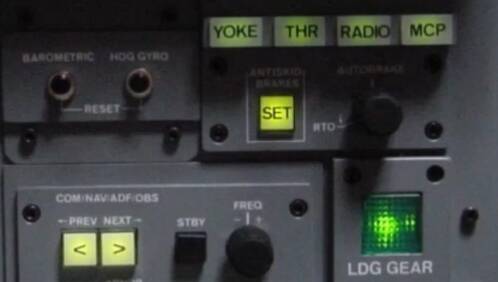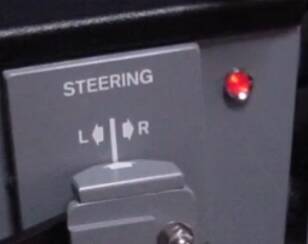This is a throttle quadrant made for small aircraft, such as the Beechcraft King Air.
I like how attention is made to details in every single device like also for this one ! ![]()
![]() First Jet with integrated keyboard stand !!!
First Jet with integrated keyboard stand !!! ![]()
Really like the annunciators design and visual quality …
… together, indeed, with the overall integration ![]()
All I can say is WOW! Nicely done and very professional. Keep up the GREAT WORK!!! ![]()
This is a flight video showing the instrument setup after selecting the Cessna Citation CJ4 in the JET Cockpit.The instruments displayed on the external monitor are the PFD, MFD, and FMC from a Cessna Citation CJ4. To display these, the gauge bezels have been replaced with ones different from those of an F/A-18E/F.
The left gauge bezel is for the F/A-18E/F, and the right one is for the Cessna Citation CJ4. The push switches and dials equipped in each bezel currently have no assigned commands, so they are not wired and are purely decorative. We’ve included them in advance so that they can be easily wired or replaced with appropriate switches in the future if commands are assigned or if they are needed for other flight simulation software.
Quick questions from your experience, around the analog potentiometer actual limited range from the levers move in specific setups and situations vs the real full range available on the potentiometer itself
Also about the BU0836A choice and ability to set the range limits and send it in proper expected values range to the computer
Questions : How did you managed and solved the final actual values range due to lever limited course ?
Does the BU0836A allow to re map the final values to be sent to the computer to an expected 0 to 1023 from for instance the sample shown which are 235 to 874 limited ?
Is the windows calibration process rather enough on its own where we don’t have to worry about ?
Here, actual limited range from lever limits is 235 to 874 values (arbitrary and fictitious) :
The BU0836A boasts excellent analog resolution and demonstrates stability in response to input. Utilizing a sealed potentiometer that is resistant to degradation, and assuming calibration has been performed correctly, I believe there should be no issues with changes made at any position within its movable range. If the potentiometer has a B-curve, there’s no need for concern. The BU0836A is so outstanding that once calibrated, it rarely requires recalibration. The potentiometers I primarily use are around 100K ohms. By connecting semi-fixed resistors, etc., in parallel or series with the potentiometer, fine adjustments can be made without worrying about the potentiometer’s shaft angle. Furthermore, FSUIPC7 allows for analog axis curve adjustments. For these reasons, I don’t pay too much attention to the numerical values.
Thanks for your clarifications made in very simple way ![]()
It could be I put to much of worrying in this area …
Your sample make me see I should have a go at some point with LeoBodnar boards, like the BU0836A. I made recommendation to use this product to a friend in the past and never thought to buy one for my own usage ![]() Could be time for trying to make up for lost time …
Could be time for trying to make up for lost time … ![]()
My first flight sim was Flight Simulator II (Sublogic) for DOS, which I got in 1987. I’ve since lost that Flight Simulator II (Sublogic), but I still have the floppies for Microsoft Flight Simulator 4.0 from two years later, in 1989. Since I don’t have a PC that runs DOS anymore, I installed the DOS I had back then on an old laptop from 18 years ago that was stored in my warehouse and tried running Microsoft Flight Simulator 4.0.
This is a small throttle unit jokingly made in 2007. It can actually be operated normally in FS2004 and FSX of that time. Its overall size is compact at 4.53(W) x 5.71(D) x 4.92(H) inches.
I’m thinking of making another small and cute throttle unit sometime soon.![]()
![]()
Thank you for uploading that video. The good old days of DOS and floppy discs, then stiffy discs! TDK & BASF! It took me right back to my childhood! So many good memories ![]()
This is a 2-throttle unit that I built and delivered nearly 20 years ago upon the request of a flight sim friend. It includes functions such as an AP controller and RADIO controller. This throttle unit is still in active use, having undergone regular maintenance and several customizations since its delivery.
I’ve put together a video showcasing the creation of a YOKE-style controller featuring an MFD and a throttle quadrant. This comprehensive video, approximately 4 hours and 38 minutes in length, takes you through the YOKE construction, the throttle quadrant fabrication, and the building of the enclosure with the MFD.
This is a dual throttle controller unit designed in the style of a Boeing 767.
It is designed to be used in combination with the Saitek Yoke.
This is a 2-throttle unit manufactured in 2006. It is equipped with a 10-inch LCD Multi-Function Display, an autopilot controller, a simplified RADIO controller, a GEAR lever, and a steering tiller handle.
Does the sandow like require some maintenance at some point through time, like missing slowly some elasticity or superficial alteration of the tissue sheath ?
In any case I find it an actually great idea ![]()
I suggest this to maintain the aircraft in safety while parked with strong winds : AVIA shock cords | Sandow Technic ![]()
![]()
Really like the lighting of annunciators and lighted push-buttons, indicators lights, at any stage … amazing ![]()
![]()


